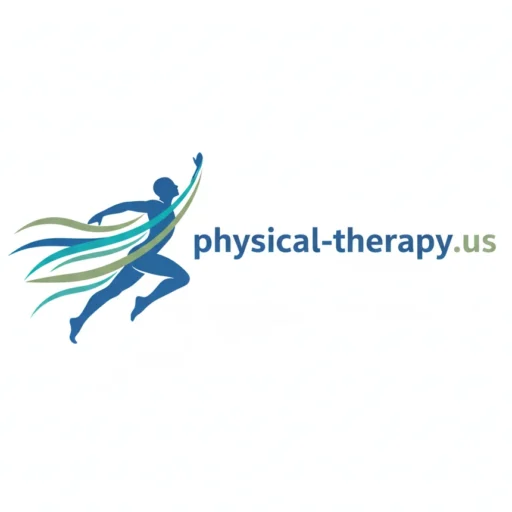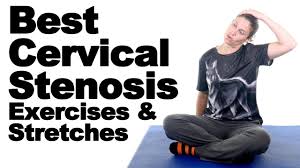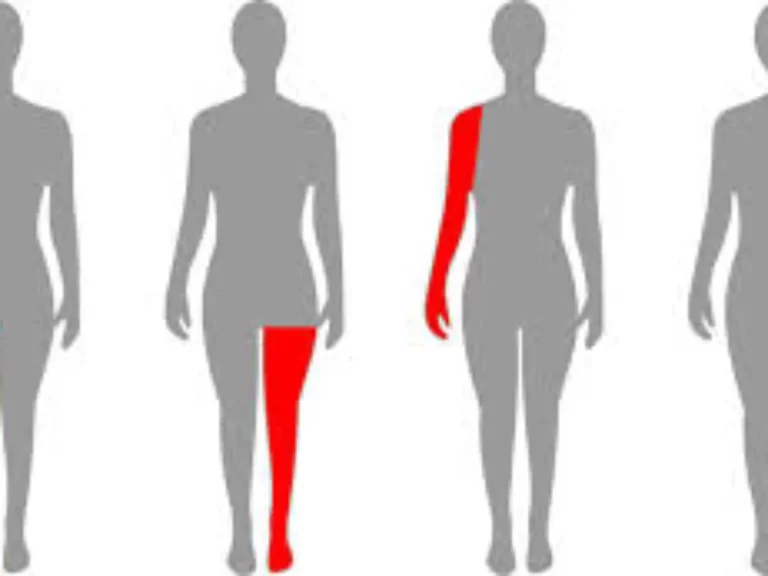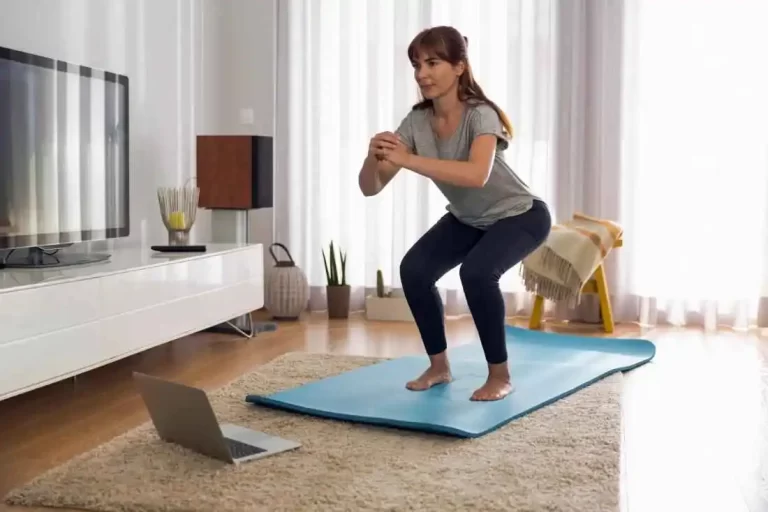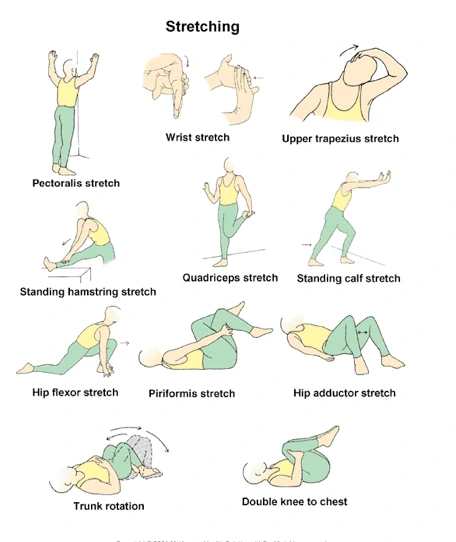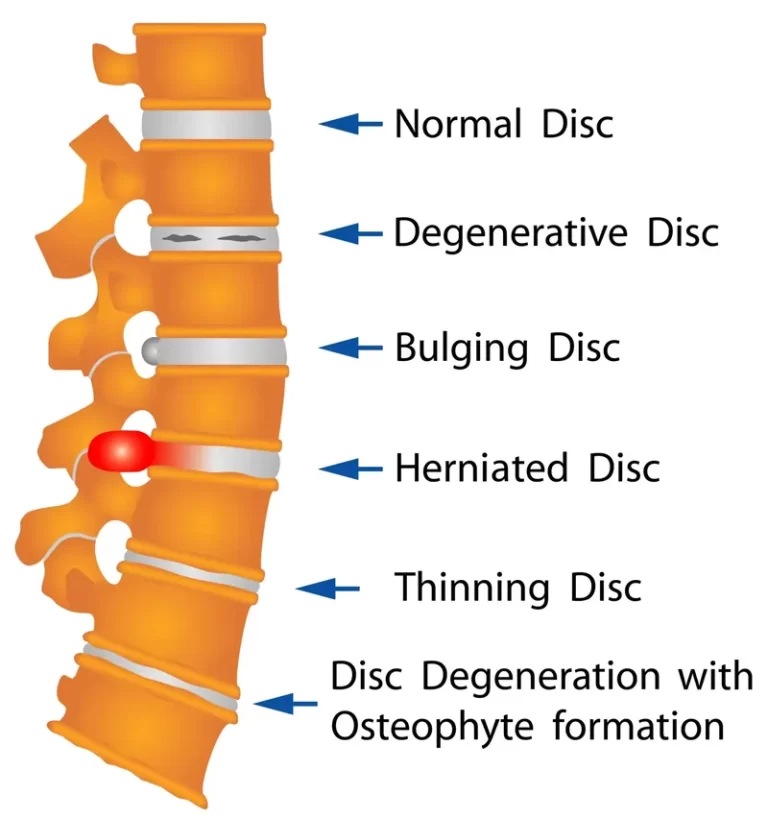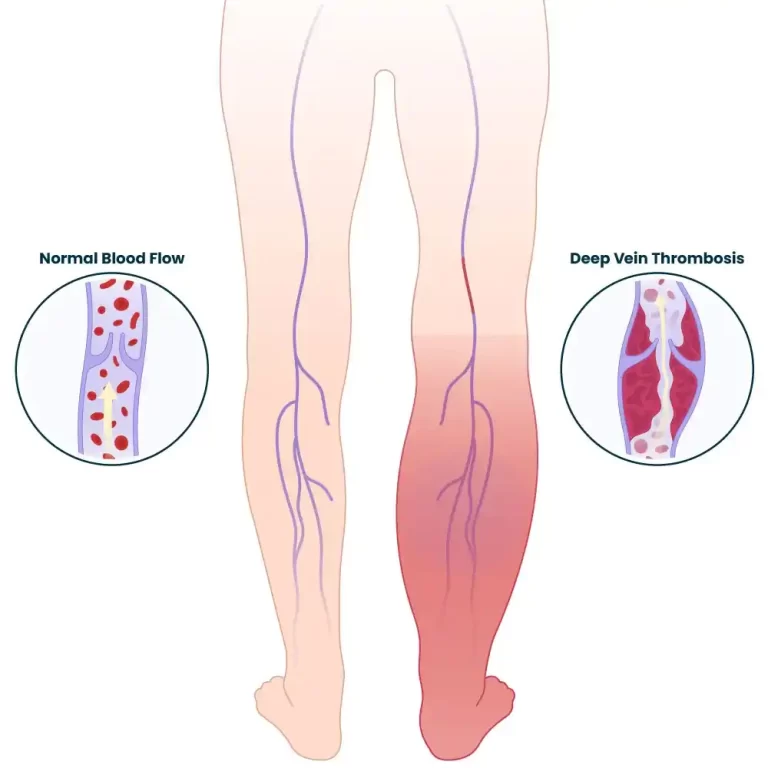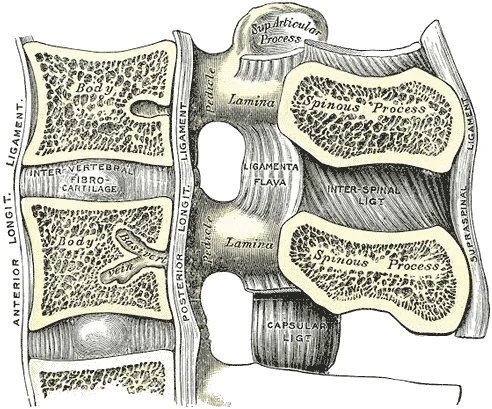Physical Therapy Routine for Cervical Stenosis
Introduction:
When the neck’s spinal canal narrows due to cervical stenosis, pressure is placed on the spinal cord and nerves. Symptoms like as stiffness, numbness, tingling, neck pain, and even hand or arm weakness may result from this.
Through posture improvement, strengthening of supporting muscles, and increased neck flexibility, a well-planned physical therapy regimen can be quite helpful in controlling these problems.
You can carry out everyday tasks with more ease and confidence if you regularly practice mild exercises that relieve pain, minimize nerve compression, and restore correct neck movement.
Benefits of Physical Therapy Routine for Cervical Stenosis:
- Reduces Neck Pain and Stiffness: Mild stretches and mobility exercises promote neck flexibility and relieve tense muscles, which lessens stiffness and chronic pain.
- Improves Posture: Better alignment is supported by stronger neck, shoulder, and upper back muscles, which lessens strain on the spinal cord and nerves.
- Increases Range of Motion: Consistent physical therapy encourages safer and more fluid neck motions, halting additional joint constriction.
- Improves Muscle Stability and Strength: By stabilizing the cervical spine, strengthening exercises shield it from stress during everyday tasks.
- Reduces Nerve Compression Symptoms: By increasing spinal flexibility and space, regular therapy can reduce symptoms such as numbness, tingling, or weakness in the arms.
- Supports Long-Term Recovery: A personalized physical therapy regimen promotes long-term neck health and function by fostering recovery and averting flare-ups.
Physical Therapy Routine for Cervical Stenosis Video:
Physical Therapy Routine for Cervical Stenosis:
Chin Tucks:
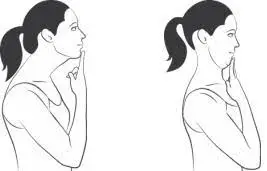
One of the best exercises for enhancing posture and strengthening the deep neck flexor muscles is the chin tuck. A typical problem with cervical stenosis is forward head posture, which can be corrected with this easy exercise. You can achieve that by sitting or standing erect, shoulders relaxed, and gently pulling your chin straight back, creating a “double chin.” Release after a few seconds of holding the position. By promoting good alignment, reducing strain on the cervical spine, and lengthening the back of your neck, this exercise can help relieve pain and nerve compression.
Scapular Retractions:
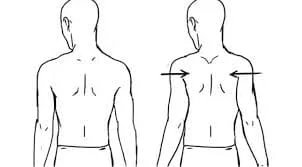
The muscles of the upper back, especially the middle trapezius and rhomboids, which promote good neck and shoulder posture, can be strengthened by scapular retractions. Sit or stand tall and with your shoulders relaxed to complete this exercise. Squeeze your shoulder blades together gently, pulling them back and down as though you were holding a pencil between them. Hold for a short while, then let go gradually. Consistently performing scapular retractions improves stability around the cervical spine, alleviates stiffness and irritation associated with the nerves, and counteracts rounded shoulders.
Thoracic Extension on Foam Roller:
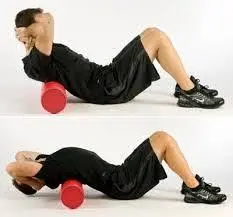
A great exercise to increase upper back mobility and ease shoulder and neck stress is thoracic extension on a foam roller. Poor posture and increased strain on the neck region are frequently caused by restricted thoracic spine movement. This workout involves placing a foam roller horizontally beneath your upper back while you are lying on your back.
Using your hands to support your head, maintain your hips on the ground, and open your chest by gradually extending your upper back over the roller. After a few seconds of holding, go back to the beginning position. By repeating this exercise, cervical stenosis-related neck tension is lessened, posture is improved, and spinal mobility is restored.
Neck Rotations:

A mild and efficient technique to preserve cervical spine flexibility and lessen stiffness is to rotate your neck. This exercise relieves tension caused by bad posture or nerve compression and helps increase blood flow to the neck muscles.
Sit or stand up straight and relax your shoulders to do it. Keep your chin level and slowly turn your head to one side as much as feels comfortable; do not tilt your head up or down. Return to the center and repeat on the opposite side after holding for a few seconds.
Regular neck rotations improve range of motion, ease tension, and promote general neck mobility—all of which are particularly advantageous for people with cervical stenosis.
Neck Side Bending:
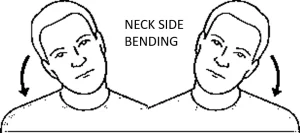
A great stretch for releasing tension from the sides of the neck and increasing the cervical spine’s general flexibility is neck side bending. It works on the sternocleidomastoid and upper trapezius muscles, which frequently tighten in patients with cervical stenosis. Sit or stand tall and with your shoulders relaxed to complete this exercise.
Bring your ear close to your shoulder without raising it as you slowly tilt your head to one side. Feel a light tug along the other side of your neck while you hold the stretch for a few seconds. Then, go back to the beginning position and repeat on the other side. Frequent neck side-bending exercises serve to alleviate nerve strain in the neck area, improve posture, and lessen stiffness.
Wall Angels:
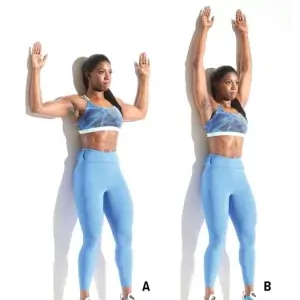
Wall angels are an excellent way to strengthen your upper back, shoulder mobility, and posture, all of which lessen the strain on your cervical spine. This exercise involves standing with your head, upper back, and lower back contacting a wall, feet a few inches from the wall, and your back flat against the wall.
Maintaining your arms and back against the wall, slowly glide them upward before lowering them back to the beginning position. Proceed cautiously and gently. Regular wall angel exercises can reduce cervical stenosis-related neck stress, improve postural muscles, and open up the chest.
Isometric Neck Extension:
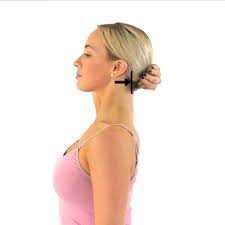
Isometric neck extension is a safe and efficient workout to develop the muscles at the back of the neck without creating strain or excessive movement. This exercise relieves pain from weakness or bad posture and stabilizes the cervical spine. Sit or stand up straight and relax your shoulders to do it.
Behind your head, place your hands or a soft object, such as a towel. To prevent your neck from moving, gently press your head back into your hands while fighting the motion. Do this multiple times. By increasing stability and lowering nerve pressure, regular isometric neck extension practice promotes spinal alignment, strengthens the neck, and lessens the symptoms of cervical stenosis.
Isometric Neck Flexion:
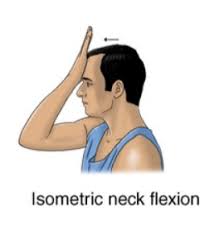
The deep neck flexor muscles, which maintain good posture and spinal alignment, can be strengthened using isometric neck flexion. It is perfect for people with cervical stenosis because it stabilizes the cervical spine without causing excessive movement and helps lessen forward head posture. Sit or stand up straight and keep your shoulders relaxed to complete this exercise. Press a soft object, like your hand, to your forehead.
To prevent your head from moving, gently press your forehead against your hand while fighting the motion. After 5–10 seconds of holding the contraction, release it. Do this multiple times. Frequent isometric neck flexion exercises serve to stabilize the neck, lessen pain, and avoid putting too much strain on the spinal cord and nearby nerves.
Isometric Neck Side Flexion:
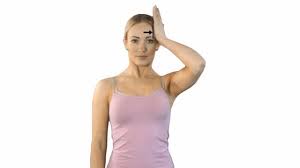
A mild yet effective exercise for strengthening the muscles on either side of the neck, isometric neck side flexion helps support healthy cervical alignment and lessen tension. Sit or stand up straight and keep your shoulders relaxed to complete this exercise. Put your hand directly over your ear on the side of your head.
To prevent your neck from moving, gently press your head into your hand while fighting the motion. After 5–10 seconds of holding this contraction, release it. Continue on the opposite side. Frequent isometric neck side flexion exercises improve posture, reduce cervical stenosis-related pain and nerve pressure, and increase lateral neck stability.
Quadriceps Banded Neck Extension:
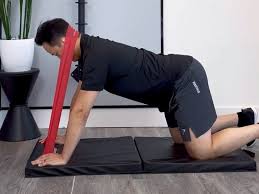
An advanced exercise that improves cervical stability by strengthening the posterior neck muscles and offering regulated resistance is the quadriceps banded neck extension. The “quadriceps band” in this context refers to the use of a resistance band that is fixed at a low location to create tension for neck extension, even though it may sound like it targets the legs.
Attach a resistance band to a sturdy low anchor behind you to complete this exercise. Wrap the band around the back of your head while standing or kneeling with your back to the anchor. Without going overboard, slowly extend your head backward against the band’s resistance while maintaining a neutral neck position.
Return to the starting position after a brief hold. This exercise is beneficial for managing the symptoms of cervical stenosis because it strengthens the neck extensors, enhances posture, and lessens the load on the cervical spine.
Conclusion:
Strength, flexibility, and total spinal health can all be greatly enhanced by a regular physical therapy regimen for cervical stenosis. Exercises that ease pain, improve posture, and relieve nerve pressure include chin tucks, scapular retractions, wall angels, thoracic extensions, neck rotations, and isometric neck movements.
People can restore their mobility, avoid more issues, and maintain a greater quality of life by implementing these exercises into their routine. Frequent, supervised practice guarantees safer neck motions, fosters long-term stability, and equips people to successfully manage cervical stenosis symptoms.
FAQs
Which sitting position is ideal for people with cervical stenosis?
To keep your back straight and your low back (lumbar) curvature normal, place your buttocks at the end of the chair. Looking forward, keeping your shoulders back, and pressing your spine against the back of your chair are all ways to maintain proper posture when seated.
Which cervical spinal stenosis symptoms are the most severe?
Patients with spinal stenosis frequently have neck pain, pain in one or both arms, and an electrical sensation that travels down the back as the head moves. In addition to the sensation that the hands or arms are asleep, numbness of the arms may also develop.
Is it possible to treat cervical stenosis without surgery?
Physical therapy and pain medication are nonsurgical treatments that help many people with mild spinal stenosis stay active and manage their symptoms.
Is recovery possible from cervical stenosis?
You are somewhat trapped with spinal stenosis once you have it. Even while the harm cannot be undone, some treatments can help you properly manage your symptoms. For instance, anti-inflammatory drugs can be used to treat mild-to-moderate spinal stenosis.
What is the finest cervical physical therapy?
What is the most effective physiotherapy exercise for cervical pain? The precise reason and intensity of cervical pain determine the optimal physiotherapy exercise. Nonetheless, chin tucks, neck rotations, side bending, shoulder shrugs and rolls, and neck isometrics are a few exercises that are frequently suggested.
Does cervical stenosis improve with walking?
Because walking is a minimal-impact exercise and you can control the distance and pace, it might be a useful exercise for spinal stenosis. Walking, however, frequently causes or worsen symptoms of spinal stenosis.
Which cervical stenosis warning signs are present?
Your arms or legs may feel suddenly weak or numb. incapacity to regulate bowel or bladder movements. extreme neck pain accompanied by weakness, tingling, or numbness. unexpected issues with balance or walking.
For cervical spinal stenosis, how long does physical treatment last?
Duration of treatment might range from 4 to 12 weeks, depending on the severity of the symptoms. It could take longer for patients who need surgery to recover. Stretching, strengthening, and stability activities must be continued by the patients.
Does massage help people with cervical stenosis?
Soft Tissue Massage: Massage therapy helps ease spinal stenosis pain by relaxing tense muscles. Additionally, it can encourage tissue repair and increase circulation.
Which workout is the most effective for treating spinal stenosis?
A person with spinal stenosis may benefit from certain workouts to maintain their mobility and increase their strength. To increase spinal mobility, one can perform pelvic tilts, knee embraces, and knee rolls. To build muscle, they can also perform wall squats, hip bridges, and sit-to-stand exercises.
When I have cervical stenosis, what should I not do?
Avoid heavy lifting, contact sports, high-impact activities, bad posture, extended periods of idleness, and repetitive motions to prevent further damage from cervical spinal stenosis. Additionally, it’s recommended to stay away from activities like riding motorcycles, operating heavy machinery, or executing certain hyperextension stretches that might produce excessive jolts, shaking, or neck twisting. Additionally, smoking should be avoided because it might impede recovery and increase inflammation.
Which cervical stenosis treatment is the most recent?
One of the most recent developments in the treatment of spinal stenosis is endoscopic spine surgery, which offers an ultra-minimally invasive (MIS) strategy that puts patient safety, quicker recovery, and long-term comfort first.
What is cervical myelopathy physical therapy?
To control symptoms, enhance function, and stop progression, physiotherapy for cervical myelopathy takes a multifaceted strategy that includes manual treatment, targeted exercises, balance training, and posture correction. Cervical traction, manual therapy to increase range of motion, and other exercises to build muscle and enhance coordination are frequently included in treatment plans. If surgery is done, it is also essential for pre- and post-operative care.
What is the cervical stenosis protocol?
Physical therapy, injections, or medication may be used to treat mild cases of cervical spinal stenosis. You might need to think about having surgery if your symptoms are severe or if your muscle weakness has increased. Your spinal stenosis may get worse if you have scoliosis or arthritis.
For cervical stenosis, what form of physical treatment is appropriate?
A customized exercise regimen to strengthen and stabilize the neck and core muscles, increase flexibility, and retrain posture to lessen nerve pressure is the main goal of physical therapy for cervical stenosis. Manual treatment, targeted exercises such as cervical rotation and thoracic extension, aerobic exercise to improve activity tolerance, and ergonomic advice for lifting and daily tasks are some examples of interventions.
References:
- Pt, B. S. (2025b, April 10). 10 Spinal stenosis exercises to reduce pain and improve flexibility. Verywell Health. https://www.verywellhealth.com/exercise-program-for-spinal-stenosis-2696100
- Williams, F. (2022, September 29). What to know about cervical spinal stenosis. https://www.medicalnewstoday.com/articles/cervical-spinal-stenosis
- McQuilkie, S., DC. (2023e, July 4). Simple Cervical Spinal Stenosis Exercises (Plus Symptoms & Causes). PostureFlow (Formerly Back Intelligence). https://backintelligence.com/cervical-stenosis-exercises/
